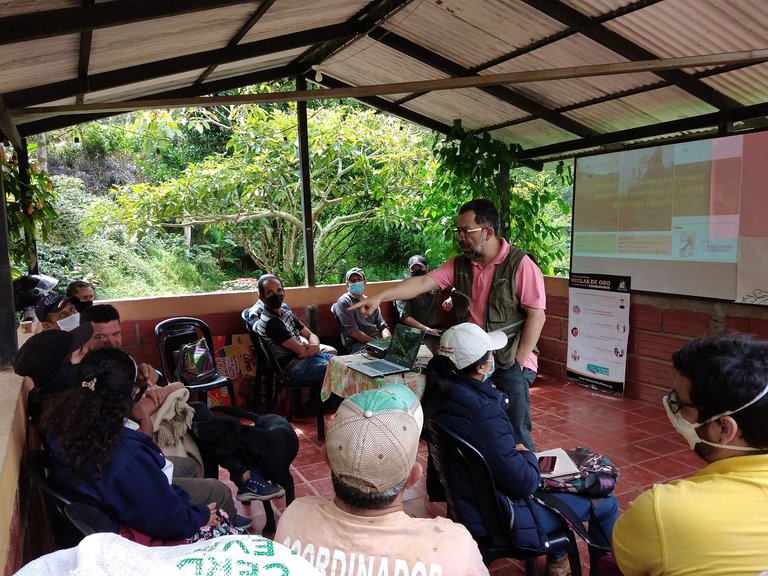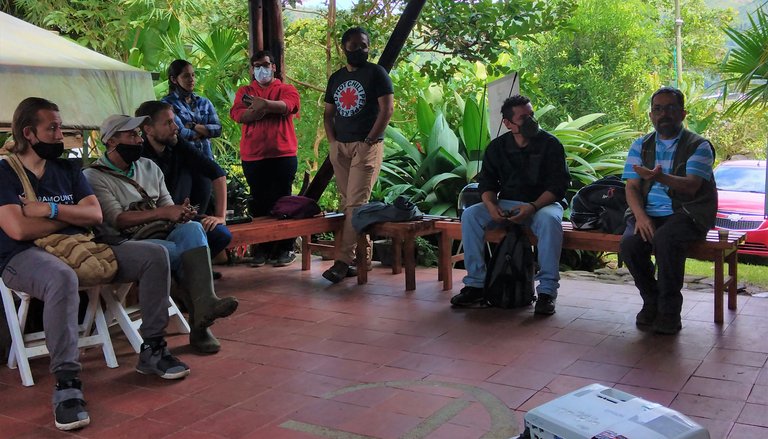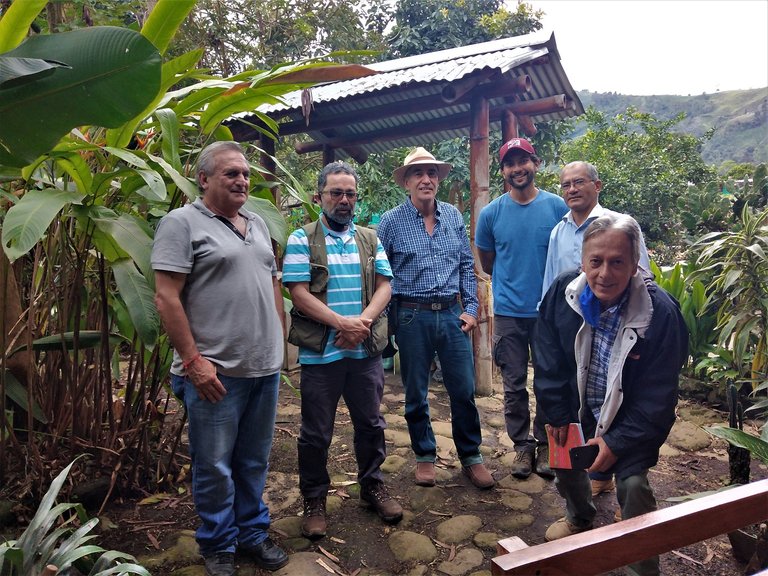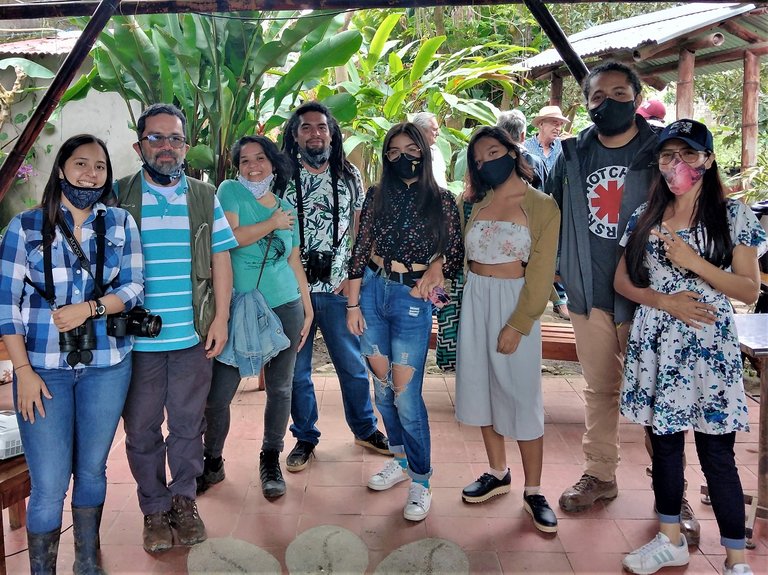Autores: Ledis Arango-Vallejo; Sergio E. Lozano-Baez.
SELVA: Conservación en el Neotrópico, en su proyecto “Creando un paisaje sostenible para dos especies de aves endémicas en peligro de extinción en Colombia”, la Caminera Tolimense-Leptotila conoveri (Ave insignia del municipio de Él Líbano) y el Gorrión montés de anteojos-Atlapetes flaviceps (Ave insignia del municipio de Villahermosa) en el departamento del Tolima, desarrolló dos talleres enfocados al tema de la restauración ecológica en las veredas El Silencio, el 27 de noviembre del 2020 y en la Hacienda tejos el 28 de noviembre del mismo año, en el Municipio de El Líbano.
Con el patrocinio de la American Bird Conservancy
SELVA: Conservation in the Neotropics, in its project “Creating a sustainable landscape for two endemic bird species in danger of extinction in Colombia”, the Tolima dove -Leptotila coneveri (flagship bird of the Él Líbano municipality) and the Yellow headed Brushfinch -Atlapetes flaviceps (flagship bird of the municipality of Villahermosa) in the department of Tolima, developed two workshops focused on the issue of ecological restoration in the El Silencio trails, on November 27, 2020 and at Hacienda Tejos on November 28 of the same year, in the Municipality of El Líbano. Sponsored by the American Bird Conservancy.

Contando con la participación de los productores rurales que hacen parte del proceso en el proyecto, estudiantes de biología de la Universidad del Tolima, estudiantes de la maestría en restauración ecológica y la importante presencia del profesor PhD. José Ignacio Barrera Cataño, Director Escuela de Restauración Ecológica de la Pontificia Universidad Javeriana de Bogotá, quien fue el invitado a compartir con todos los actores presentes el Taller en Restauración Ecológica.
Counting on the participation of rural producers who are part of the process in the project, biology students from the University of Tolima, students of the master's degree in ecological restoration and the important presence of the PhD professor. José Ignacio Barrera Cataño, Director of the Ecological Restoration School of the Pontificia Universidad Javeriana de Bogotá, who was invited to share the Workshop on Ecological Restoration with all the actors present.

Uno de los principales mensajes del taller fue el siguiente: “La restauración ecológica no es una moda, es un proceso”, por esta razón la restauración ecológica tiene que nacer desde las comunidades locales rurales y urbanas, las entidades públicas y privadas, cercanas a las áreas degradadas y en donde la restauración ecológica cumple su propósito de asistir o ayudar al restablecimiento de los ecosistemas dañados por diferentes tipos de disturbio (Naturales o antrópicos) (Basto et al. 2018).
One of the main messages of the workshop was the following: "Ecological restoration is not a fashion, it is a process", for this reason ecological restoration has to be born from local rural and urban communities, public and private entities, close to degraded areas and where ecological restoration fulfills its purpose of assisting or assisting in the reestablishment of ecosystems damaged by different types of disturbances (Natural or anthropic) (Basto et al. 2018).

Grandes experiencias se adquirieron durante el taller, por ejemplo, en plena charla y sin ningún temor se alzó una voz femenina que decía “Ya hicimos el daño, ¿Y ahora qué hacemos doctor?” Con la sinceridad que caracteriza a la mujer rural, la señora Luz Marina Junco, de la Vereda el Silencio, preguntó con un tono de angustia y de incertidumbre. Mientras todos interiorizamos aquella profunda pregunta, el profesor José Ignacio Barrera, ya tenía una diapositiva que decía: “Desafíos de restauración para mi finca, cómo hago de mi finca un gran sistema.
¡¡¡Decisiones sabias¡¡¡”
Great experiences were acquired during the workshop, for example, in the middle of the conversation and without any fear, a female voice was raised saying "We already did the damage, and now what do we do doctor?" With the sincerity that characterizes rural women, Mrs. Luz Marina Junco, from Vereda el Silencio, asked with a tone of anguish and uncertainty. While we all internalized that profound question, Professor José Ignacio Barrera already had a slide that said: “Restoration challenges for my farm, how do I make my farm a great system.
¡¡¡Wise decisions¡¡¡ ”

Las poderosas palabras del doctor José Ignacio Barrera, quedan puestas en la mente de cada uno de participantes, como plantas en el suelo, palabras sabias que retumbarán en el futuro rehacer de los treinta y dos participantes que tuvimos la oportunidad de escucharlo y compartir las experiencias con uno de los pioneros de la Restauración Ecológica en Colombia.
The powerful words of Dr. José Ignacio Barrera remain in the minds of each of the participants, like plants on the ground, wise words that will resound in the future remake of the thirty-two participants who had the opportunity to listen to him and share their experiences. with one of the pioneers of Ecological Restoration in Colombia.

Bibliografía: Basto, S., A. C. Moreno-Cárdenas y J.I. Barrera-Cataño (eds.). 2018. Restauración ecológica en áreas post-tala de especies exóticas en el Parque Forestal Embalse del Neusa. Bogotá Editorial Pontificia Universidad Javeriana / Corporación Autónoma Regional de Cundinamarca.
Dios nos bendiga siempre